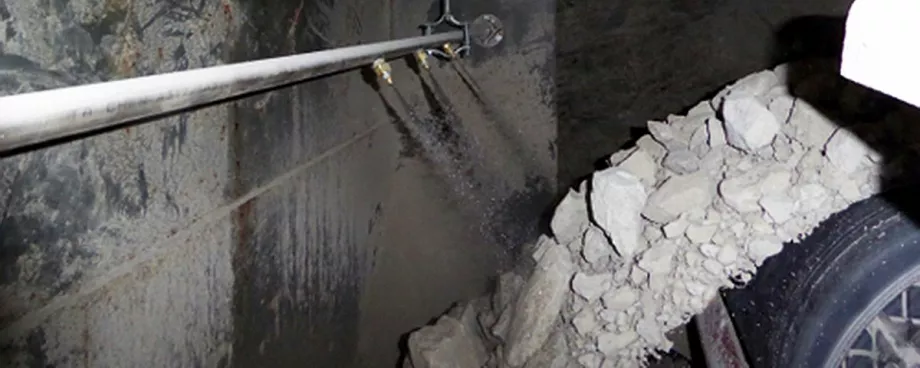The result was a significant reduction in dust emissions, creating a safer workplace and offering a measurable return on investment.
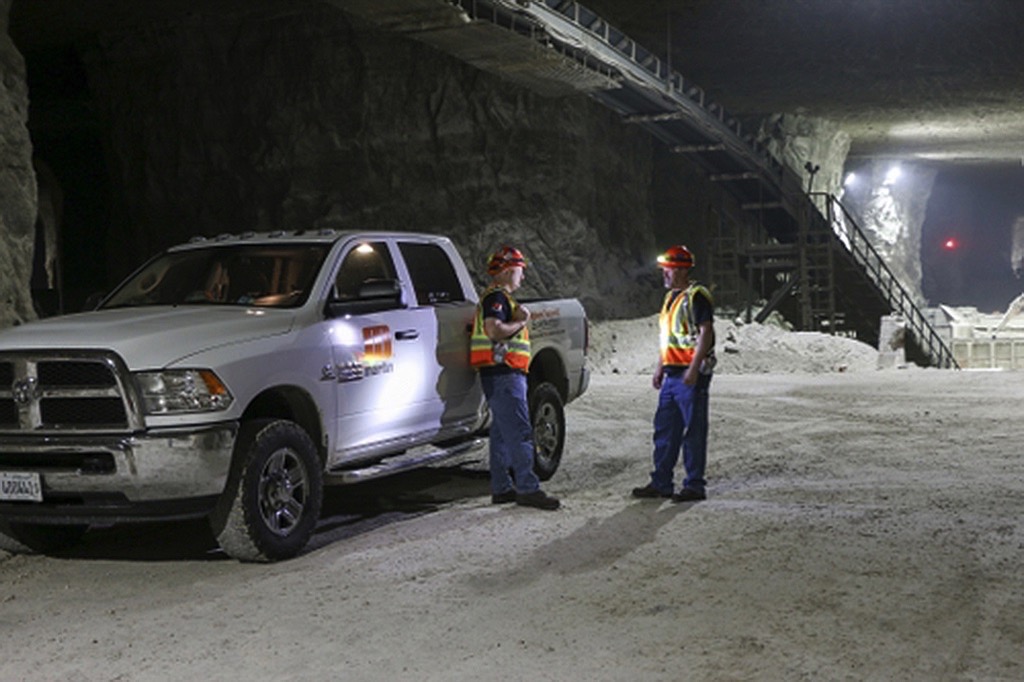
An Efficient Process
Continental Cement has been in operation since 1903. Over more than a century, the company has continued to improve and increase operations to reach a current cement production capacity of 1.2 million short tons (approx. 1.1 million tonnes) of clinker annually.A 350 foot (106 m) underground mine now provides the primary source of limestone, which makes up 75% of the raw material required to produce the meal in the company’s Type I/II, and Type III Portland cement. Yielding 1.6 million short tons (approx. 1.4 million tonnes) of limestone annually, the extracted material is transported via truck and high-speed conveyors in order to move it to the surface, where it is held in a 100,000 ton (approx. 91,000 tonne) outdoor storage pile, then processed through a four-stage preheater/precalciner dry process cement kiln. Fifty-ton trucks dump 600 to 650 t/h (544 to 589 mt/h) of extracted limestone into an underground hopper that feeds an impact crusher, which reduces the rocks to 4-in. (101 mm) minus. The aggregate is then loaded onto Conveyor 0, a 60-inch (1524 mm) wide belt traveling approximately 700 fpm (3.5 m/s) for 400 feet (122 m). The rock is discharged through a transfer chute onto Conveyor 1, travelling up the 1,300 foot (400 m) inclined belt to the surface and dropping 20 feet (6 m) onto the outdoor storage pile. “The two main areas we identified as having unacceptable dust emissions were at the underground crusher hopper and outdoors where the material was discharged onto the stockpile,” explained Environmental Manager Leonard Rosenkrans.
Solutions
The original dust control equipment followed a traditional approach, with a goal of wetting the surface of the cargo. However, operators learned that limestone dust was not being adequately controlled by the water alone. Martin Engineering representatives visited the site with a trailer containing a fully functional Martin® Dust Control Unit (DCU), allowing a full demonstration of the unit’s capabilities. Conducting an end-to-end walkthrough of the cargo flow, technicians were able to determine the best course of action.“After inspection, we devised a plan that optimized the dust control at both locations, while using as much common equipment as possible,” said Brian Nance, Product Engineer at Martin Engineering.
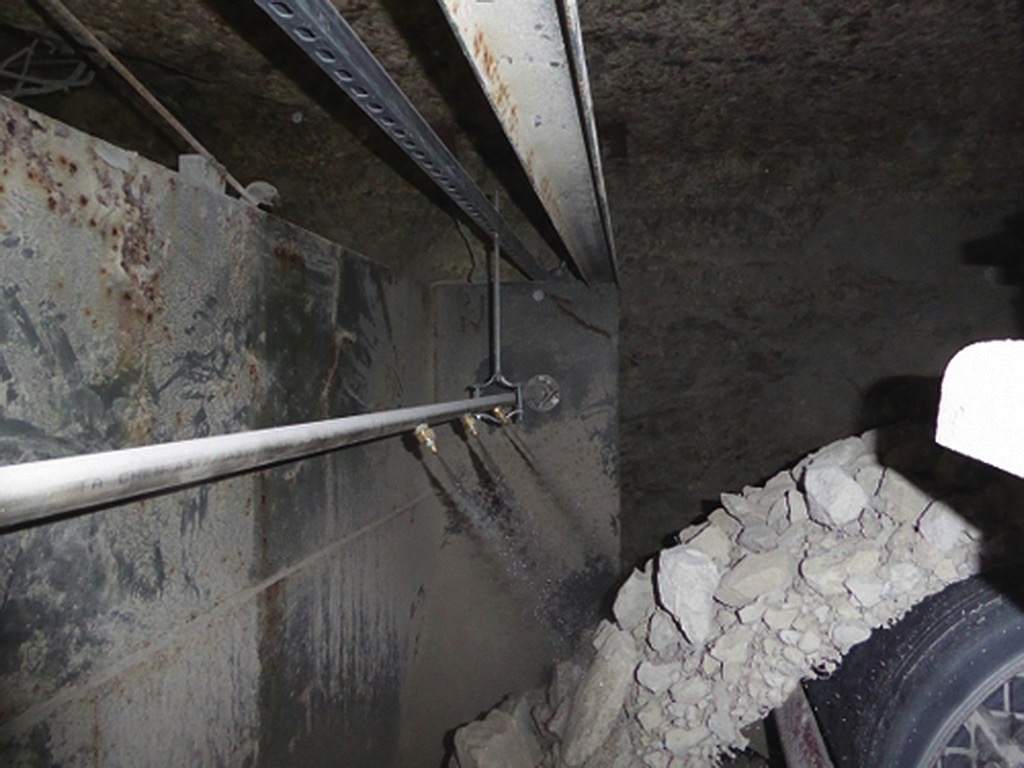
A 6-nozzle cradle-mount system was installed to provide serviceability at the Conveyor 1 discharge, and a manifold system was placed to address the issues at the dump pocket. Material monitoring sensors were employed at both locations to ensure application only when needed.
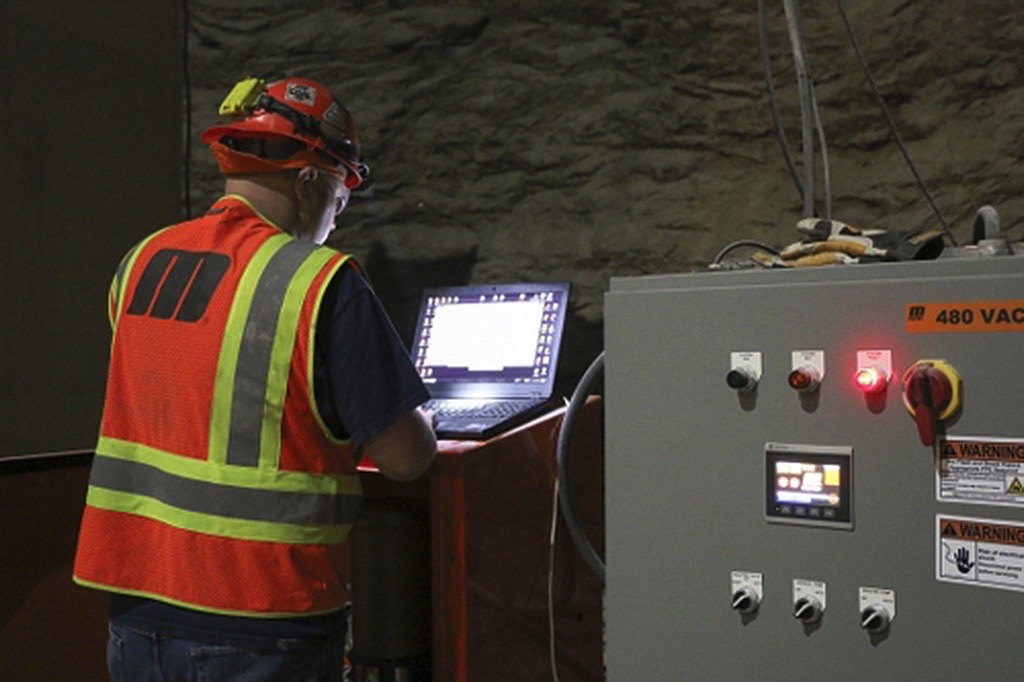
The pumps in the DCU are powered by variable frequency drive (VFD), allowing independent control over the flow of water and chemicals for each pump. The proprietary Martin MEL-101 chemical binder additive is dosed at the proper ratio to suit the operating conditions. The entire system is integrated with the plant’s control system, so that it can be monitored remotely. With an approximate 300:1 water-to-additive ratio, the MEL-101 supports the water’s role in providing dust suppression using economically concentrated volumes. To control costs, the VFD-driven pump regulates chemical flow by releasing chemical only when material is detected on the conveyors.
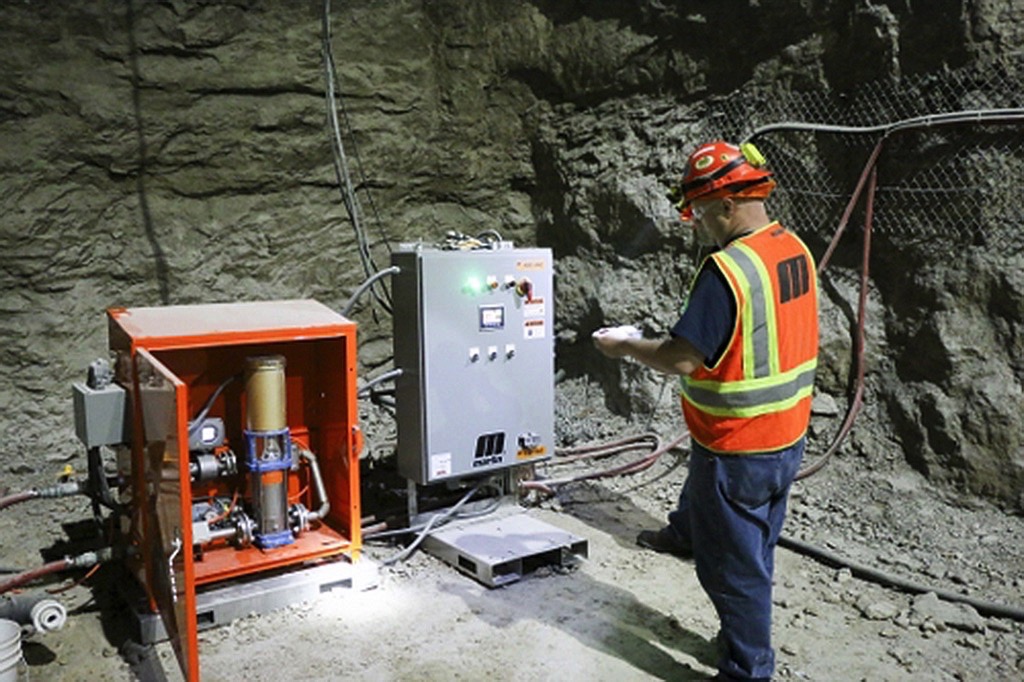
Nozzles were placed at the hopper mouth, so the DCU could spray treated moisture inward toward the impact zone. By keeping the particles within the material flow, the new dust control system helps minimize health and safety issues, reduce wear and tear on equipment and create a better work environment.
Results
After some fine-tuning to obtain the optimal chemical-to-water ratio, as well as proper sprayer placement for best coverage of the cargo flow, the system has eliminated most visual signs of dust emissions and has drastically improved air quality in and out of the mine. “It’s almost like a light switch,” Nance said. “Turn the DCU on and the dust is no longer present at either of the emission points. Turn it off and within a few minutes, the dust returns.” There are 22 employees in the mine. The cost of cement industry dust to society and workers has been studied in depth by the EPA to justify dust regulations.1 The cost of the installation was about USD50,000 and the annual maintenance and chemical costs are about USD35,000 per year. The 5 year Net Present Value (NPV) of the costs plus the investment is about USD200,000. Using the data from the EPA report, the benefit to society created by Continental from being proactive in the mine is about USD375,000. So, the intuitive decision to be proactive in protecting the workers and surrounding neighborhoods was a wise choice. There are many ways to look at the direct benefit to the company, including reduced health and safety issues as well as increased equipment life. Sometimes it pays just to do the right thing.“The Martin team has gone above and beyond to make sure everything is operational and efficient,” Rosenkrans concluded. “We are currently considering a service contract for the new dust system, and potentially including the company’s onsite belt cleaner blade replacement service as well. From our first encounter, we’ve had a positive experience throughout the entire process and we’re very satisfied with the result.”
References
1https://www.epa.gov/sites/production/files/2016-04/documents/ria_cement-2010.pdf |
■










